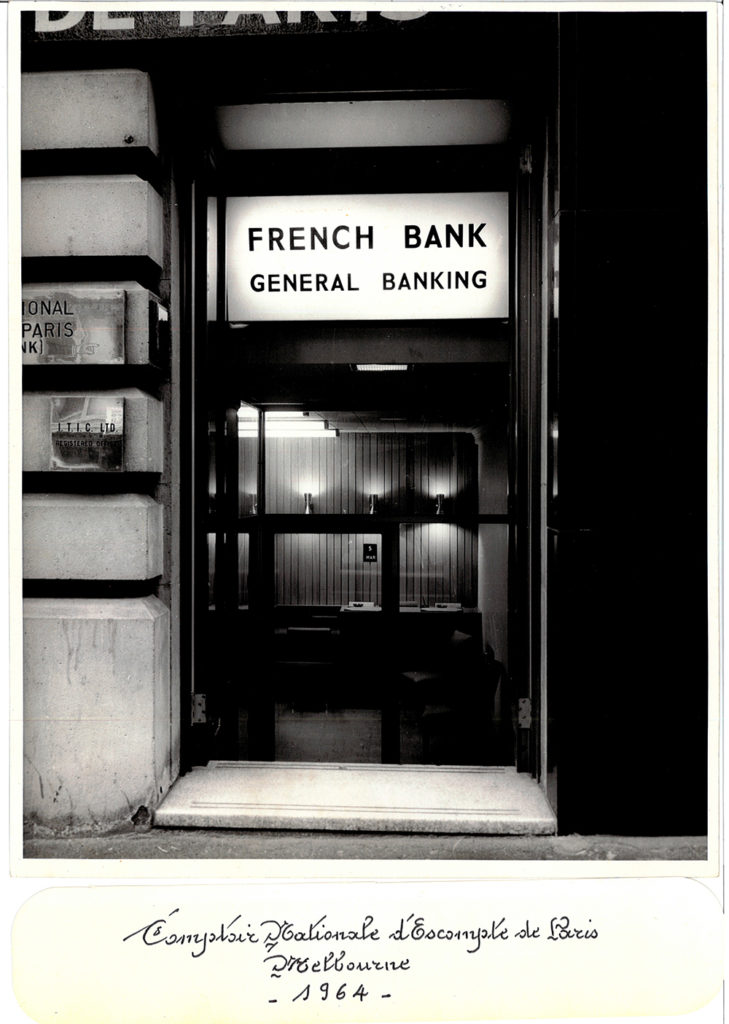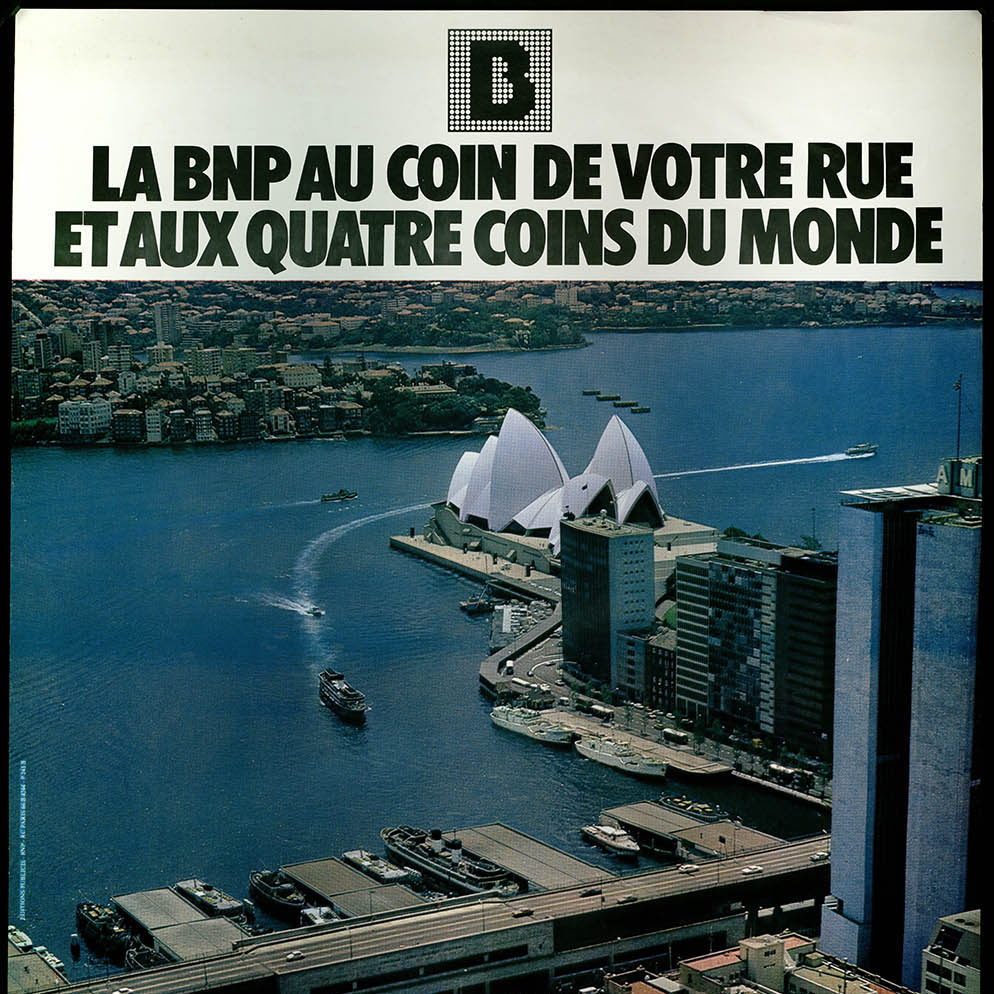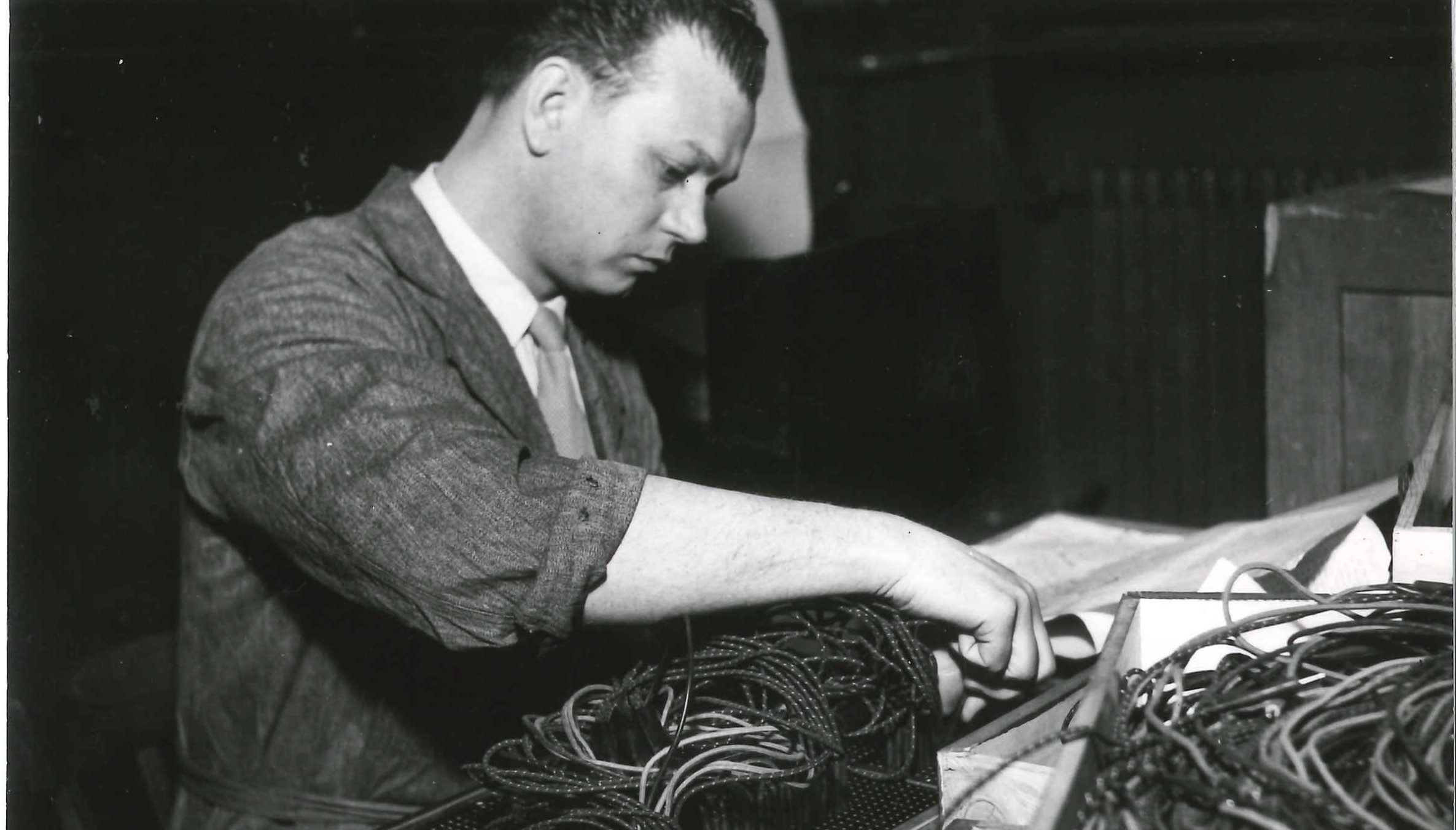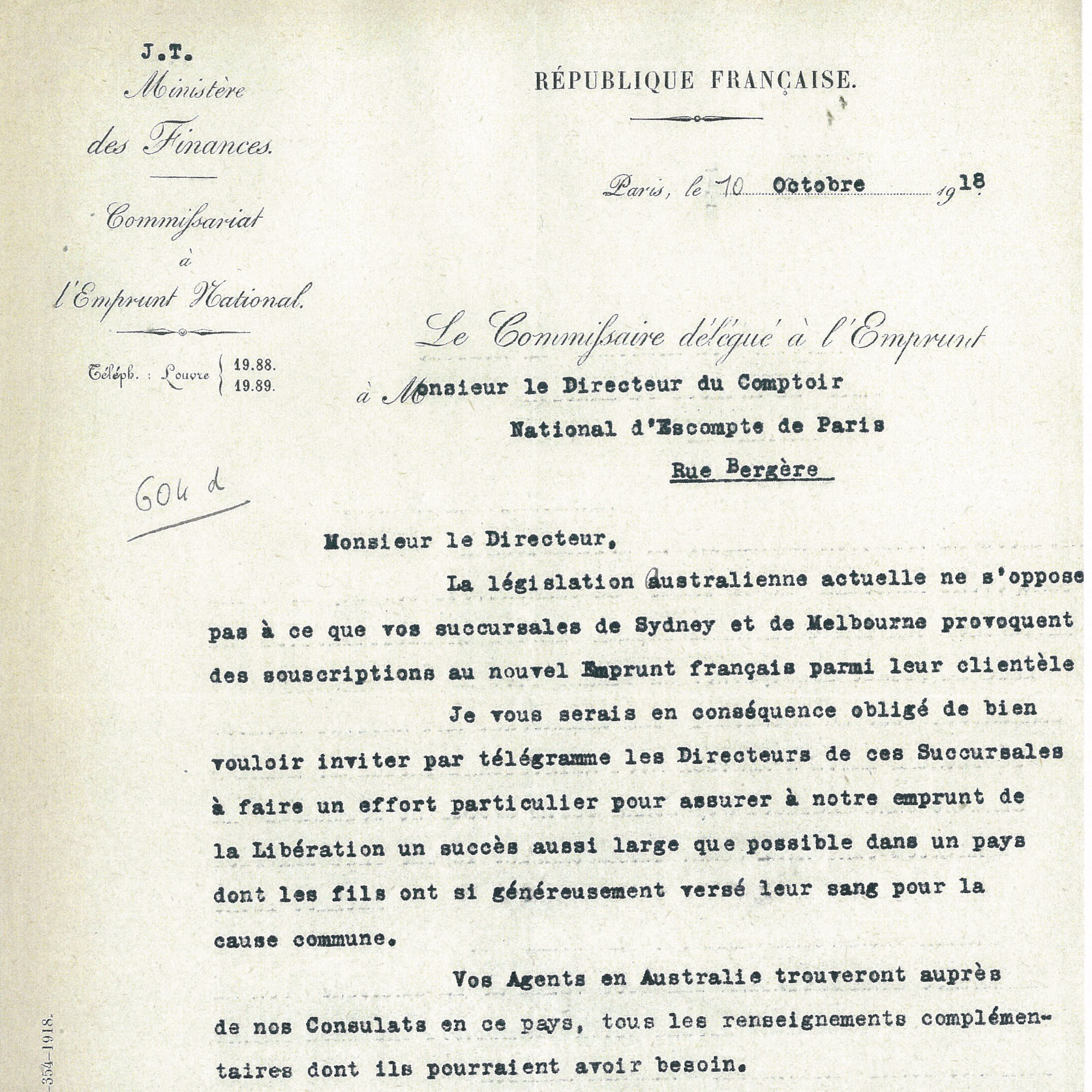In Australia since 1881

The Comptoir d’Escompte de Paris set up establishments in Melbourne and Sydney in 1881 to finance French imports of Australian wool. For nearly a century it would be the only major foreign bank in Australia.
The beginnings of the Australian adventure (1881-1939)
At that time Australia was already a major wool producer and the wool industry in France – based in Lille, Roubaix, Elbeuf and Mazamet – was supplied from Down Under. However the trade was firmly in the hands of the British and everything went through London. So French manufacturers made a specific request to the Comptoir d’Escompte de Paris to open a branch in Australia.
In 1881, the Comptoir opened branches in Melbourne and Sydney. Charles Phalempin, a native of Lille who had joined the bank in 1861, was the first Manager. The Australian branches focused mainly on their mission of supporting the import of Australian wool for the benefit of the French textile industry. This business, which up to then had been handled by British or Anglo-Australian banks, now moved over entirely to the Comptoir. At the time Australia was undergoing rapid development and business began to go extremely well.

However banks and credit institutions were lending immoderately, and a financial crisis was bound to occur sooner or later. It struck with full force in 1893. The Comptoir nevertheless came through the crisis without difficulty because the wool trade that made up most of its business continued.
The Australian branches during the Second World War
In 1939, the Comptoir in Australia was a small but solidly-based foreign bank, employing fifteen staff in Melbourne and eight in Sydney.
The invasion of France in 1940 turned the country into enemy-occupied territory and the Australian branches of a French bank immediately came under the ‘Trading with the Enemy’ Act promulgated that same year throughout all British colonies. This brought them under the control of the Commonwealth Bank, which wielded central bank powers in Australia. The excellent relationship between the Comptoir and the Commonwealth Bank enabled the Comptoir’s Australian branches to gradually recover some freedom of action.
There was another problem, however. The War had led to a complete stoppage of imports of Australian wool into France and the Comptoir management had to find new areas of activity in order to survive. They rose to the challenge. Drawing on the knowhow of its staff in the import-export field, the Comptoir moved successfully into financing the import into Australia of English fabrics, products from the colonies, rubber and mechanical parts and the export of Australian products to new markets such as Turkey.
The evolution of the bank’s business model in Australia
During the 1960s the Comptoir began to expand its commercial activities. In 1966, the Comptoir d’Escompte de Paris merged with the Banque Nationale pour le Commerce et l’Industrie (BNCI) to form Banque Nationale de Paris (BNP). In 1970 BNP participated in the creation of the Australian European Finance Corporation alongside the Commonwealth Bank and BNL. The approach of this new lending institution was to raise capital in Europe to finance medium and long-term loans in Australian dollars and foreign currencies to Australian borrowers. At the same time, BNP’s Australian branches were helping to finance the needs of both foreign companies and large Australian firms.

In 1980, BNP was still the only major overseas bank operating in Australia under a full banking licence. It was not until the following year that Australia began more generally to authorise foreign banks to operate in its banking markets.

The growth of BNP Paribas in Australia
When BNP Paribas was formed in 2000, this merger gave rise to a new drive towards working with large corporations. Two years later the Bank acquired Cogent, the investment operations business of international financial services company AMP, and embarked on Securities business in Australia. By 2005, BNP Paribas was one of the top ten banks in Australia. The Bank achieved strong growth in the corporate market, stepped up its offering of Australian dollar-denominated market products, and expanded its range in two other main business lines – Securities and Asset Management.








